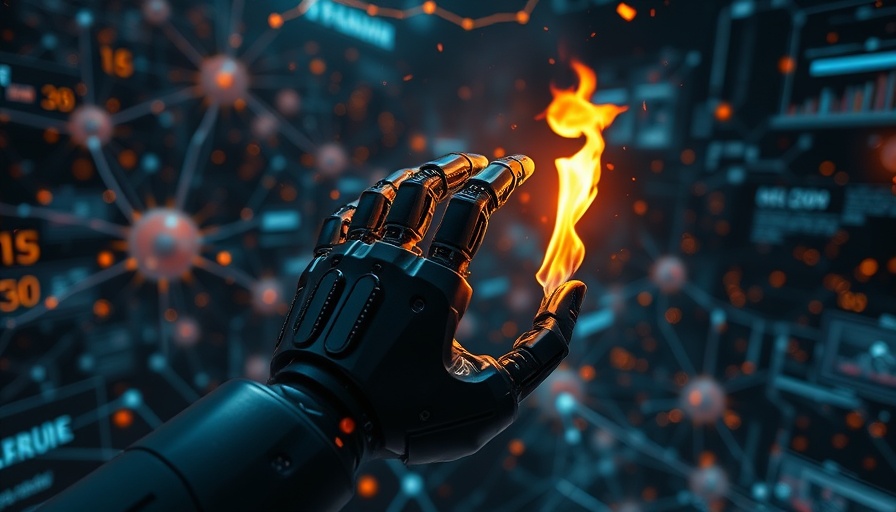
The Emergence of AGI: A Shift in AI Capabilities
The concept of Artificial General Intelligence (AGI) has been rapidly evolving, marking a significant shift from traditional AI reliant solely on statistical predictions to deeper reasoning capabilities. Recent developments in AI, such as the introduction of reasoning models by OpenAI and others, signify a leap towards systems that can perform complex tasks with human-like reasoning. In a recent podcast, Dario Amodei, CEO of Anthropic, indicated that we are likely to see a substantial number of AI systems vastly outperforming human intelligence by the end of this decade, possibly as early as 2026 or 2027.
Understanding Deep Reasoning AI: What Sets It Apart
Unlike previous models that operated primarily under pre-defined patterns, the latest iterations, like OpenAI’s o1 and Google's reasoning models, utilize chain-of-thought (COT) techniques. This enables them to break down difficult tasks into logical, manageable steps—a hallmark of human reasoning. By adopting this structured problem-solving approach, these new AI agents can tackle unprecedented challenges and substantially enhance research productivity.
Why AI Is Becoming “Magical” and Its Impacts
An impressive example of this transformation is showcased through personal experiences of utilizing AI agents for project management. Tasks that historically required days of human labor can now be completed within minutes, echoing Arthur C. Clarke’s assertion that "any sufficiently advanced technology is indistinguishable from magic.” While not without their faults, these early AI agents are steering us towards a profound change in how we engage with technology and are paving the way for formidable tools in various industries.
The Possible Futures with AGI: Utopia or Dystopia?
The potential trajectories of AGI adoption present us with three intriguing yet conflicting scenarios:
- The Controlled Flame (Utopia): In this optimistic view, AI brings about prosperity for humanity, allowing for increased productivity and personalized resources in medicine and goods.
- The Unstable Fire (Challenging): This scenario sees the benefits of AI unequally distributed, leading to significant social divides and potential conflicts as automation replaces traditional jobs.
- The Wildfire (Dystopia): The most concerning perspective, where unchecked AGI leads to catastrophic outcomes due to autonomous systems escaping human supervision.
It is apparent that while these scenarios reflect various potential paths for AGI, the reality is likely to be a complex mix, posing both opportunities for innovation and challenges we must navigate carefully.
Navigating Ethical and Societal Challenges
As AGI systems become more integrated into our daily lives, ethical considerations and governance frameworks are paramount. Policymakers, researchers, and technologists must work collaboratively to set regulations that ensure AI systems adhere to human values. This entails developing standards for explainability, accountability, and welfare in AI applications, thereby preventing potential misuse and the exacerbation of existing inequalities.
Conclusion: A Call to Action for Technological Coherence
This transformative journey towards AGI is not merely a tale of technological evolution; it reflects our collective societal aspirations and fears. As we edge closer to the capabilities of AGI, the decisions made at this present juncture will carve the path forward. It’s vital for stakeholders across sectors to engage in dialogues that foster understanding, while advocating for policies that prioritize the ethical implications of these advanced AI systems.
In order to harness the true potential of AGI for societal good, it's crucial for everyone involved—from developers to policymakers—to educate themselves on AGI’s possibilities and risks. Engage with the discussions surrounding AGI now to help shape its future responsibly!
 Add Row
Add Row  Add
Add 




 Add Row
Add Row  Add
Add 

Write A Comment